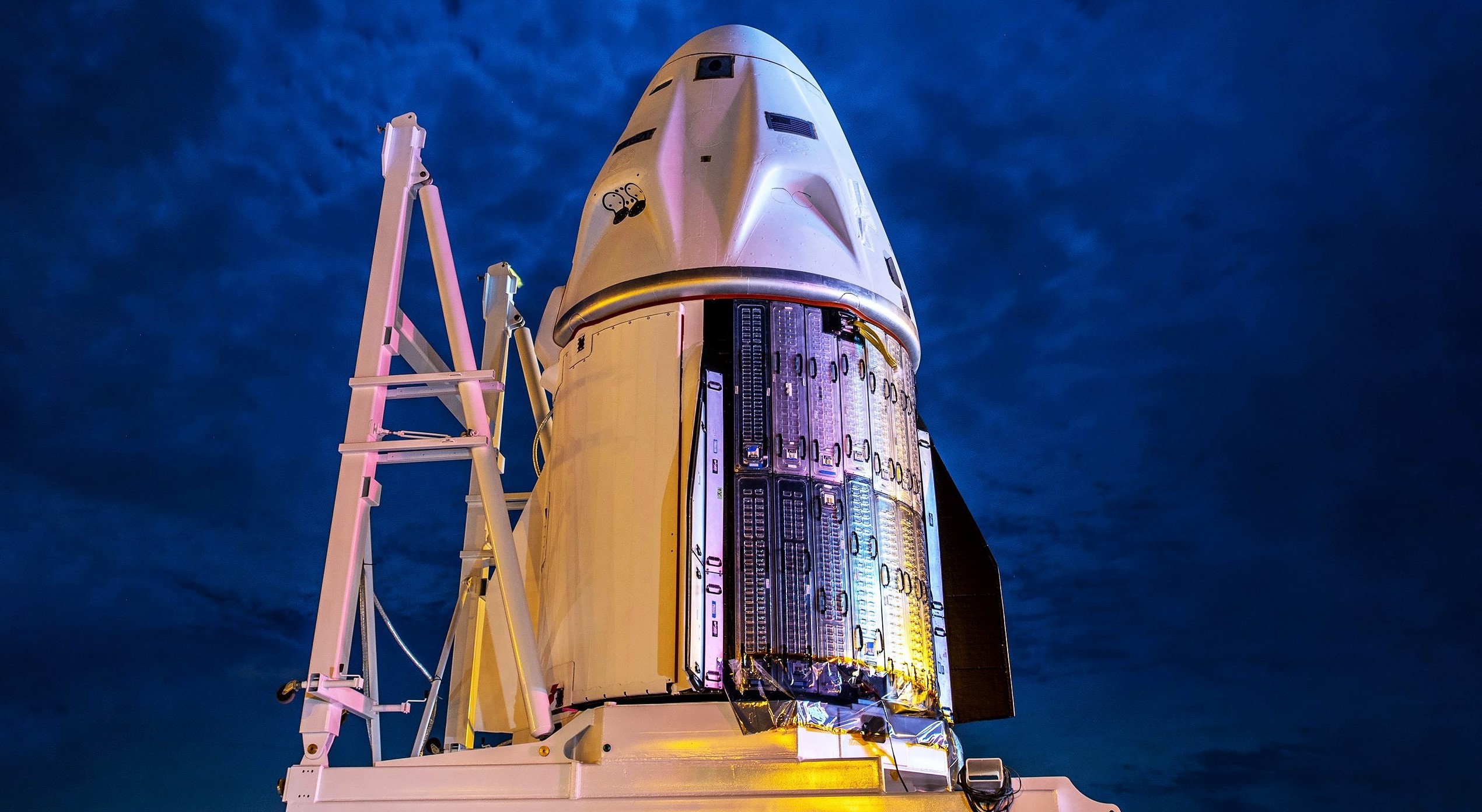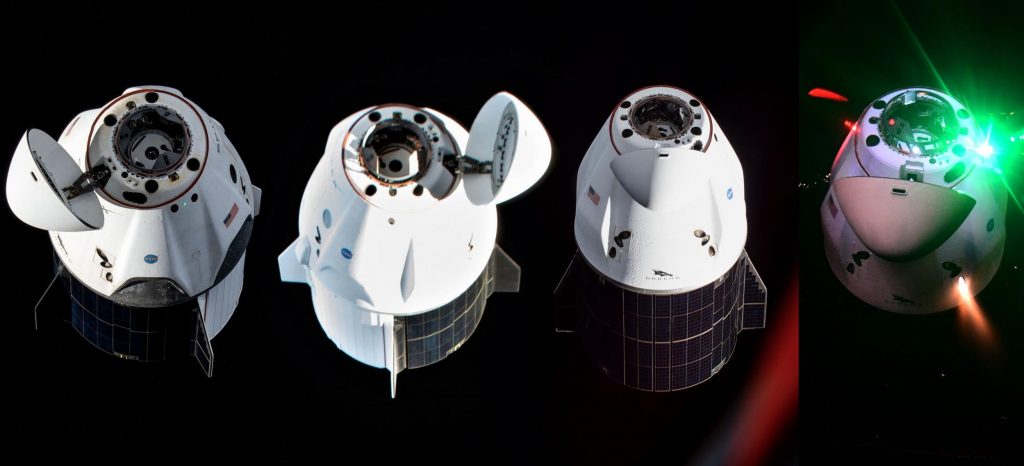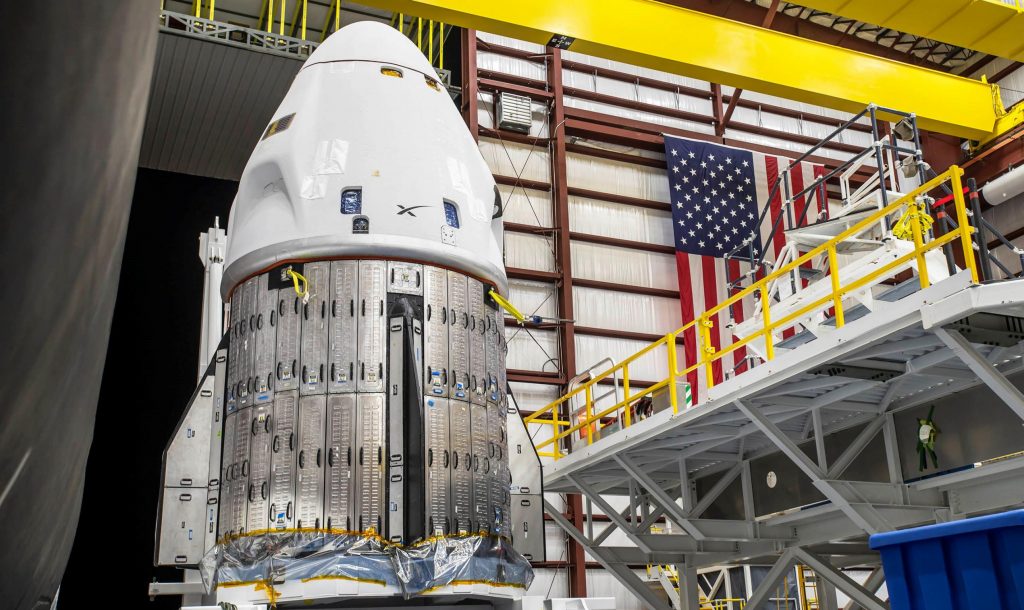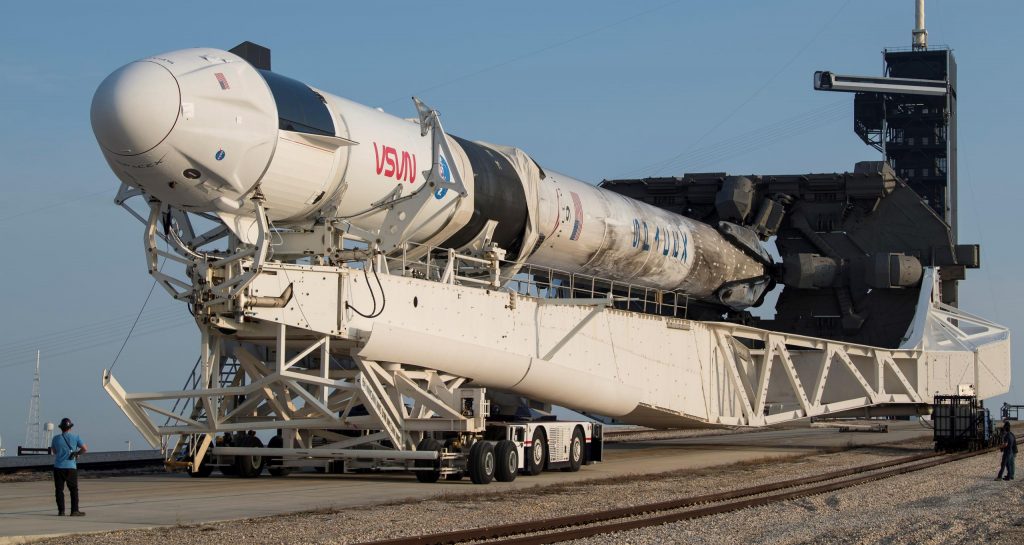

News
SpaceX’s newest Crew Dragon spacecraft arrives at launch site
Right on schedule, SpaceX has rolled a new Crew Dragon spacecraft to the pad for its first astronaut launch.
Known as Crew-3, the mission – SpaceX and NASA’s third operational astronaut launch and second ‘crew rotation’ – is scheduled to launch as early as 2:21 am EDT (06:21 UTC) on Halloween (Sunday, October 31st) after a minor one-day delay. In lieu of an operational alternative from Commercial Crew partner Boeing, whose Starliner spacecraft remains chronically delayed, that means that a SpaceX Crew Dragon will again join a second Crew Dragon already docked to the International Space Station (ISS), freeing up four NASA, ESA, and JAXA Crew-2 astronauts for their return to Earth after more than half a year in orbit.
Crew-3 will also debut a new Crew Dragon capsule christened “Endurance” by the mission’s four astronauts, beginning the introduction of several new Dragons as part of SpaceX’s plan to double its fleet of reusable orbital spacecraft in less than a year.

In a media briefing following a successful October 25th flight readiness review (FRR), SpaceX and NASA officials revealed that the only ‘open item’ (the only issue left unsolved) for Crew-3 was the qualification of a change… to Crew Dragon’s toilet. During SpaceX’s highly successful Inspiration4 mission in September 2021, Dragon performed flawlessly except for a small issue discovered with its last-resort toilet. According to the briefing, in less than a month and incurring what amounts to zero delays to Crew-3, SpaceX analyzed the Inspiration4 spacecraft, determined the fault (a leaky storage tank), redesigned said tank, and replaced the new spacecraft’s faulty toilet with the fixed design.
The issue appears to only remain ‘open’ because SpaceX and NASA are still finalizing the studies and documentation needed to qualify the design change – no small feat in a human-rated spacecraft with dozens of critical systems packed together in close proximity. Neither partner appears to believe that that qualification work will delay Crew-3’s Halloween launch.


After performing closeout work and carefully fueling the spacecraft with toxic monomethylhydrazine (MMH) fuel and nitrogen tetroxide (NTO) oxidizer, SpaceX transported Crew-3’s new Dragon to Kennedy Space Center Launch Complex 39A on October 24th. In the ~24 hours since then, it’s likely that SpaceX has flipped Crew Dragon horizontal and mated it with Falcon 9’s orbital second stage – itself already attached to the mission’s flight-proven booster.
As early as Tuesday, the Dragon and Falcon 9 launch vehicle will roll out to Pad 39A for an integrated static fire test, followed by a dry dress launch rehearsal with Crew-3 astronauts Thomas Marshburn (NASA), Raja Chari (NASA), Kayla Barron (NASA), and Matthias Maurer (ESA).
If all goes well during those crucial tests and rehearsals and weather permits, Crew-3 will lift off next Sunday and dock with the ISS early on Monday, November 1st, joining two Russian cosmonauts and five ESA/NASA astronauts. Crew-2 astronauts Shane Kimbrough (NASA), Megan McArthur (NASA), Akihiko Hoshide (JAXA), and Thomas Pesquet (ESA) will then board their Crew Dragon and depart the ISS on November 4th to return to Earth as early as November 5th.
News
Tesla begins Robotaxi certification push in Arizona: report
Tesla seems serious about expanding its Robotaxi service to several states in the coming months.

Tesla has initiated discussions with Arizona transportation regulators to certify its driverless Robotaxi service in the state, as per a recent report from Bloomberg News. The move follows Tesla’s launch of its Robotaxi pilot program in Austin, Texas, as well as CEO Elon Musk’s recent comments about the service’s expansion in the Bay Area.
The Arizona Department of Transportation confirmed to Bloomberg that Tesla has reached out to begin the certification process for autonomous ride-sharing operations in the state. While details remain limited, the outreach suggests that Tesla is serious about expanding its driverless Robotaxi service to several territories in the coming months.
The Arizona development comes as Tesla prepares to expand its service area in Austin this weekend, as per CEO Elon Musk in a post on X. Musk also stated that Tesla is targeting the San Francisco Bay Area as its next major market, with a potential launch “in a month or two,” pending regulatory approvals.
Tesla first launched its autonomous ride-hailing program on June 22 in Austin with a small fleet of Model Y vehicles, accompanied by a Tesla employee in the passenger seat to monitor safety. While still classified as a test, Musk has said the program will expand to about 1,000 vehicles in the coming months. Tesla will later upgrade its Robotaxi fleet with the Cyercab, a two-seater that is designed without a steering wheel.
Sightings of Cybercab castings around the Giga Texas complex suggests that Tesla may be ramping the initial trial production of the self-driving two-seater. Tesla, for its part, has noted in the past that volume production of the Cybercab is expected to start sometime next year.
In California, Tesla has already applied for a transportation charter-party carrier permit from the state’s Public Utilities Commission. The company is reportedly taking a phased approach to operating in California, with the Robotaxi service starting with pre-arranged rides for employees in vehicles with safety drivers.
News
Tesla sets November 6 date for 2025 Annual Shareholder Meeting
The automaker announced the date on Thursday in a Form 8-K.

Tesla has scheduled its 2025 annual shareholder meeting for November 6, addressing investor concerns that the company was nearing a legal deadline to hold the event.
The automaker announced the date on Thursday in a Form 8-K submitted to the United States Securities and Exchange Commission (SEC). The company also listed a new proposal submission deadline of July 31 for items to be included in the proxy statement.
Tesla’s announcement followed calls from a group of 27 shareholders, including the leaders of large public pension funds, which urged Tesla’s board to formally set the meeting date, as noted in a report from The Wall Street Journal.
The group noted that under Texas law, where Tesla is now incorporated, companies must hold annual meetings within 13 months of the last one if requested by shareholders. Tesla’s previous annual shareholder meeting was held on June 13, 2024, which placed the July 13 deadline in focus.
Tesla originally stated in its 2024 annual report that it would file its proxy statement by the end of April. However, an amended filing on April 30 indicated that the Board of Directors had not yet finalized a meeting date, at least at the time.
The April filing also confirmed that Tesla’s board had formed a special committee to evaluate certain matters related to CEO Elon Musk’s compensation plan. Musk’s CEO performance award remains at the center of a lengthy legal dispute in Delaware, Tesla’s former state of incorporation.
Due to the aftermath of Musk’s legal dispute about his compensation plan in Delaware, he has not been paid for his work at Tesla for several years. Musk, for his part, has noted that he is more concerned about his voting stake in Tesla than his actual salary.
At last year’s annual meeting, TSLA shareholders voted to reapprove Elon Musk’s compensation plan and ratified Tesla’s decision to relocate its legal domicile from Delaware to Texas.
Elon Musk
Grok coming to Tesla vehicles next week “at the latest:” Elon Musk
Grok’s rollout to Tesla vehicles is expected to begin next week at the latest.

Elon Musk announced on Thursday that Grok, the large language model developed by his startup xAI, will soon be available in Tesla vehicles. Grok’s rollout to Tesla vehicles is expected to begin next week at the latest, further deepening the ties between the two Elon Musk-led companies.
Tesla–xAI synergy
Musk confirmed the news on X shortly after livestreaming the release of Grok 4, xAI’s latest large language model. “Grok is coming to Tesla vehicles very soon. Next week at the latest,” Musk wrote in a post on social media platform X.
During the livestream, Musk and several members of the xAI team highlighted several upgrades to Grok 4’s voice capabilities and performance metrics, positioning the LLM as competitive with top-tier models from OpenAI and Google.
The in-vehicle integration of Grok marks a new chapter in Tesla’s AI development. While Tesla has long relied on in-house systems for autonomous driving and energy optimization, Grok’s integration would introduce conversational AI directly into its vehicles’ user experience. This integration could potentially improve customer interaction inside Tesla vehicles.
xAI and Tesla’s collaborative footprint
Grok’s upcoming rollout to Tesla vehicles adds to a growing business relationship between Tesla and xAI. Earlier this year, Tesla disclosed that it generated $198.3 million in revenue from commercial, consulting, and support agreements with xAI, as noted in a report from Bloomberg News. A large portion of that amount, however, came from the sale of Megapack energy storage systems to the artificial intelligence startup.
In July 2023, Musk polled X users about whether Tesla should invest $5 billion in xAI. While no formal investment has been made so far, 68% of poll participants voted yes, and Musk has since stated that the idea would be discussed with Tesla’s board.
-

 Elon Musk1 week ago
Elon Musk1 week agoTesla investors will be shocked by Jim Cramer’s latest assessment
-

 Elon Musk3 days ago
Elon Musk3 days agoElon Musk confirms Grok 4 launch on July 9 with livestream event
-

 Elon Musk14 hours ago
Elon Musk14 hours agoxAI launches Grok 4 with new $300/month SuperGrok Heavy subscription
-

 News7 days ago
News7 days agoTesla Model 3 ranks as the safest new car in Europe for 2025, per Euro NCAP tests
-

 Elon Musk2 weeks ago
Elon Musk2 weeks agoA Tesla just delivered itself to a customer autonomously, Elon Musk confirms
-

 Elon Musk1 week ago
Elon Musk1 week agoxAI’s Memphis data center receives air permit despite community criticism
-

 Elon Musk2 weeks ago
Elon Musk2 weeks agoTesla’s Omead Afshar, known as Elon Musk’s right-hand man, leaves company: reports
-

 News2 weeks ago
News2 weeks agoXiaomi CEO congratulates Tesla on first FSD delivery: “We have to continue learning!”

















